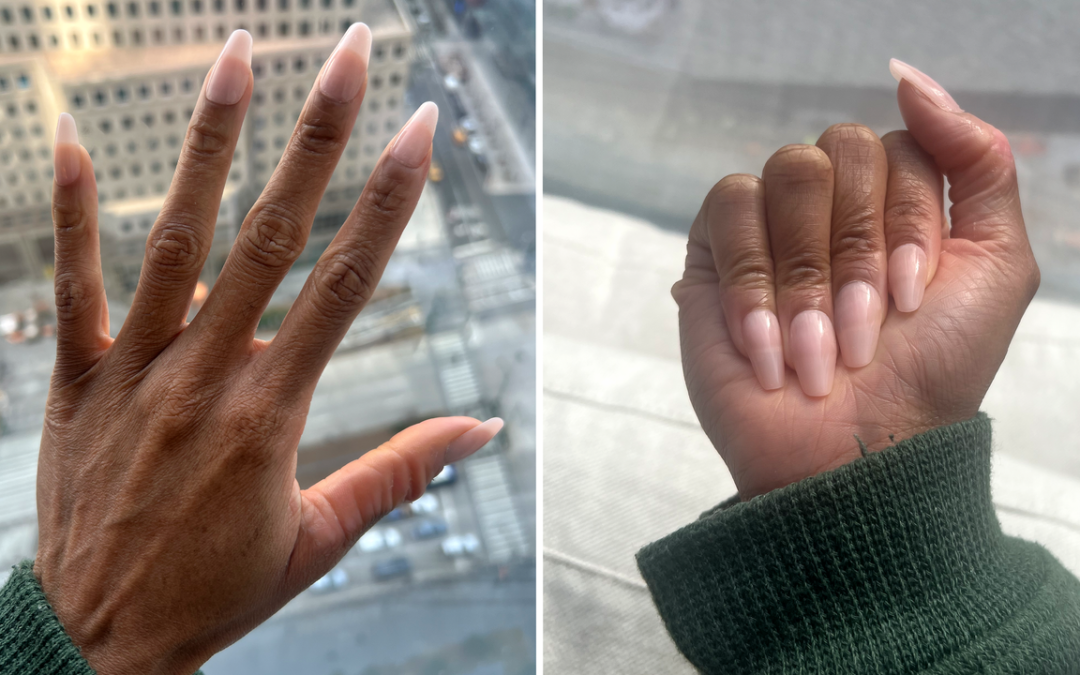The hands — and by extension, the fingers — are some of the most important tools we have for expressing ourselves. At the surface level, your fingers are used as creative outlets for nail art, acrylics extensions, and press-ons to showcase your personality to the world. But aside from the pretty stuff, your fingers can also be physical communicators. Whether it be by way of a simple wave or intricate American Sign Language, they ask for acknowledgment. I gesticulate often when I communicate, but sometimes, that can be shameful for me to do. Thanks to my painful bad habit of skin picking, showing my scarred and sore thumbs to the world reveals the manifestation of my anxiety in physical form.
I’ve suffered from dermatillomania since I was a preteen. It’s the obsessive behavior and repetitive act of picking at your skin, also known as skin picking disorder. I pick in an effort to remove any imperfection on my nails and cuticles, which ultimately only worsens their appearance over time. I’ve done enough damage that there’s now skin discoloration on both of my thumbs. The urgency to pick is near-constant, and it’s become a part of daily routine. Casually browsing on my phone? Pick. Taking a walk to enjoy the sunshine? Pick. And those activities are nothing compared to the repercussions of actual panic attacks; to cope, I attack my fingers.
Why We Pick Our Skin
According to Evan Rieder PhD, a double board-certified dermatologist and psychiatrist based in New York, taking stress out on our skin isn’t only reserved for skin-pickers. That said, there’s a definitive difference between recreational skin picking and a dermatillomania diagnosis. “We all pick at our skin to a certain extent, and there are many reasons that people do so. However, we only consider people to have a skin picking disorder when it preoccupies a substantial portion of their time and interferes with social functioning, occupational functioning, or both,” he explains. The reasons that people pick can be varied: some people pick due to stress and anxiety, others pick to smooth rough skin (which can feel temporarily rewarding), and some people are just caught in an “itch-scratch cycle” that they can’t break — and for some, more than one reason applies.
Speaking for myself, having a skin picking disorder feels that perpetual cycle. And like any bad habit, you have to work to curb it, which can mean asking for professional help to receive a proper diagnosis. “Most, if not all, people feel some shame after picking, [especially] if there is an active inflammatory skin condition [too],” says Dr. Rieder, referring to conditions like psoriasis. “The first step is to treat that [condition] and ensure the underlying skin is not [actively inflamed.]” If the picking doesn’t resolve at that point, Dr. Rieder explains, it can be helpful to see a mental health professional for behavioral therapy, or in some cases, medication. “Both can be helpful for extinguishing the behavior, though the advantage of behavioral therapy is that it gives people a skillset to use in the future that doesn’t require medications,” he adds.
Seeing my own new sores amongst my semi-healed wounds does, in fact, leave me ashamed. It’s the same reason why I got professional help by seeking therapy, as Dr. Rieder suggests. My obsession with my fingers (and my thumbs, in particular) started early: I was a thumb sucker. My thumb became a substitute for the pacifier: that binky was retired after kindergarten, taken from me by my father, who simply was tired of seeing it. Thumb sucking was a coping mechanism that turned into a full-on habit in my youth, and only now do I realize what purpose that habit actually served: I was dealing with anxiety the best way I knew how.

